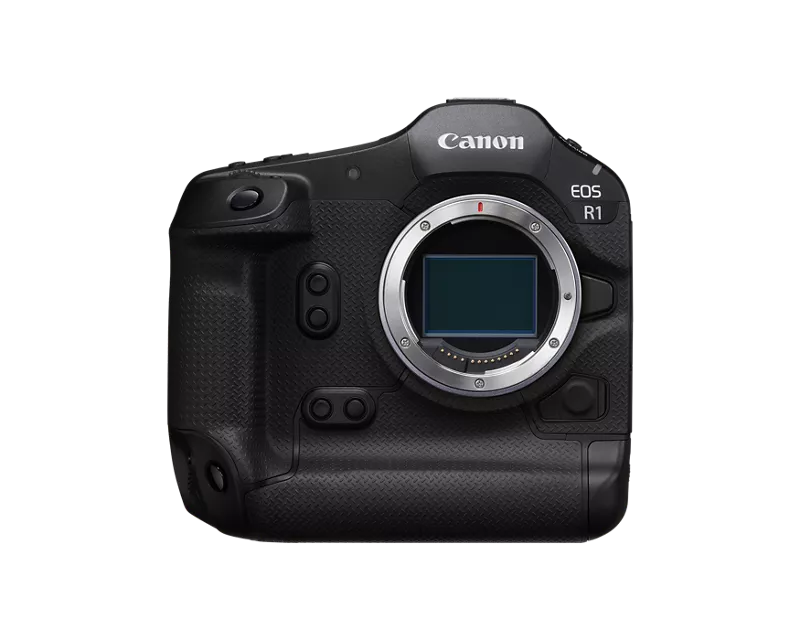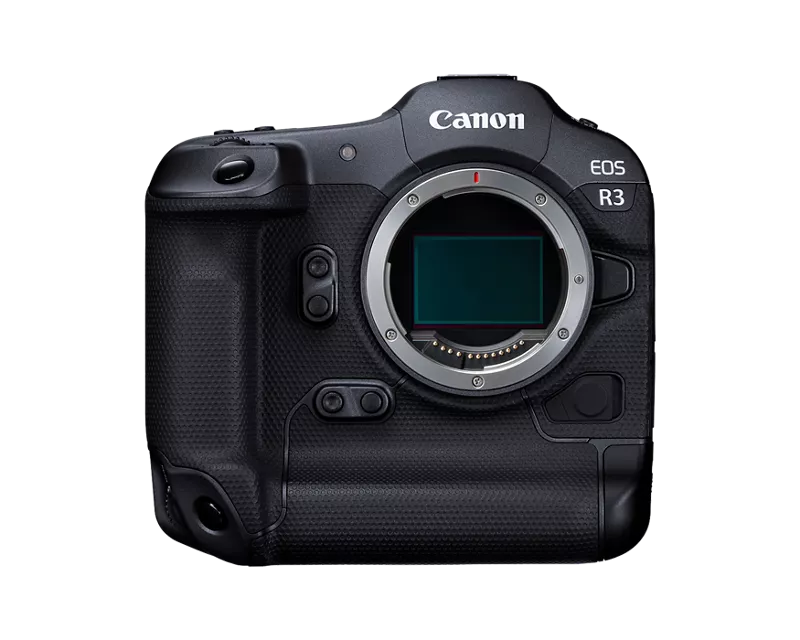- Canon Community
- Discussions & Help
- Camera
- EOS DSLR & Mirrorless Cameras
- Re: SD card deleted photos show in computer
- Subscribe to RSS Feed
- Mark Topic as New
- Mark Topic as Read
- Float this Topic for Current User
- Bookmark
- Subscribe
- Mute
- Printer Friendly Page
- Mark as New
- Bookmark
- Subscribe
- Mute
- Subscribe to RSS Feed
- Permalink
- Report Inappropriate Content
04-24-2023 04:08 PM
Is it possible that photos I deleted in camera still show up on computer import? It seems like some of the photos I see on my computer are ones that I deleted while using the camera, but I may be mistaken. Thank you!
Solved! Go to Solution.
- Mark as New
- Bookmark
- Subscribe
- Mute
- Subscribe to RSS Feed
- Permalink
- Report Inappropriate Content
09-27-2024 04:23 AM
Are you using a camera with two card slots, and are you recording to both cards?
If this is the case then the images you delete on the camera are only deleted from one of the two cards.
With two cards configured to either put a RAW and JPG on separate cards, or to write the same files to both cards you will have a card set as the "playback card". When you press the delete button on the camera the images are deleted from the playback card only. If you now take out one of the cards from the camera and put it in the computer then it is possible that it's the card that didn't have the files deleted.
This is also the case for in-camera image ratings. Ratings are only applied to the images on the playback card, not the other.
Brian
EOS specialist trainer, photographer and author
-- Note: my spell checker is set for EN-GB, not EN-US --
- Mark as New
- Bookmark
- Subscribe
- Mute
- Subscribe to RSS Feed
- Permalink
- Report Inappropriate Content
02-07-2025 01:56 PM
Recently I got a Canon R1, which has two CFexpress memory card drives, so I was finally able to record simultaneous backup RAW images to Card 2. However, since both cards were now recording the same RAW images, I could not understand why the total size of the files differed on the two drives. I thought that it had something to do with me occasionally shooting stills and videos simultaneously on the R1, a capability which the R3 does not have (to do this, one must select the video position on the two-position, stills or video switch, which is located immediately to the right of the viewfinder). The way that new functionality works is it records the videos on one card and the simultaneous stills on the other. That produces different total file sizes on the two card drives.
However, I just completed a shoot with the R1 where I did not shoot any of those simultaneous stills and videos, so I expected Card 2 to have exactly the same images and total file size as Card 1, but after I transferred Card 1 I discovered that Card 2 actually had more images than Card 1. As you explained, that was because images that I had deleted from Card 1 (my playback drive) while I was on my shoot had not been deleted from Card 2 (my backup drive). I only discovered this today (on my own) because I had set my import procedure in Lightroom Classic to NOT IMPORT DUPLICATES. That way I could easily transfer only the images (videos or still, I do not remember which) that are not on Card 1, when I record both stills and videos simultaneously. Today, as a safety check before I formatted both memory cards, I prepared to import any non-duplicates from Card 2 — and I discovered that there were some! It was only then that I realized that the only non-duplicates on Card 2 were photos that I had deleted (only from Card 1, as it turns out) while on my shoot.
I also did not know, until you said so, that my ratings that I apply to photos while on my shoots were only being recorded on Card 1. So much for having a full backup of Card 1.
This was very confusing until I finally realized (today) what has been happening for years, since I began shooting with the Canon R3.
Jan
- Mark as New
- Bookmark
- Subscribe
- Mute
- Subscribe to RSS Feed
- Permalink
- Report Inappropriate Content
09-27-2024 04:59 AM - edited 09-27-2024 05:13 AM
I am glad that in this case my colleague's solution worked, but make no mistake, habitually deleting files from your SD cards in camera is a bad idea. If you would read my post I explain why - I'm a certified IT engineer.
Further, if you are writing to dual cards in the camera, don't forget to format BOTH cards clean in camera after you have confirmed transfer of the files from the camera to your computer.
If you want another reference, see the following post by well-known photographer Jeff Cable, who holds a senior position with Lexar storage management systems.
Jeff Cable's Blog: Why you should not delete images on your memory card using your camera - and othe...
cheers, TREVOR
The mark of good photographer is less what they hold in their hand, it's more what they hold in their head;
"All the variety, all the charm, all the beauty of life is made up of light and shadow", Leo Tolstoy;
"Skill in photography is acquired by practice and not by purchase" Percy W. Harris
- Mark as New
- Bookmark
- Subscribe
- Mute
- Subscribe to RSS Feed
- Permalink
- Report Inappropriate Content
02-07-2025 02:09 PM
Recently I got a Canon R1, which has two CFexpress memory card drives, so I was finally able to record simultaneous backup RAW images to Card 2. However, since both cards were now recording the same RAW images, I could not understand why the total size of the files differed on the two drives. I thought that it had something to do with me occasionally shooting stills and videos simultaneously on the R1, a capability which the R3 does not have (to do this, one must select the video position on the two-position, stills or video switch, which is located immediately to the right of the viewfinder). The way that new functionality works is it records the videos on one card and the simultaneous stills on the other. That produces different total file sizes on the two card drives.
However, I just completed a shoot with the R1 where I did not shoot any of those simultaneous stills and videos, so I expected Card 2 to have exactly the same images and total file size as Card 1, but after I transferred Card 1 I discovered that Card 2 actually had more images than Card 1. As you explained, that was because images that I had deleted from Card 1 (my playback drive) while I was on my shoot had not been deleted from Card 2 (my backup drive). I only discovered this today (on my own) because I had set my import procedure in Lightroom Classic to NOT IMPORT DUPLICATES. That way I could easily transfer only the images (videos or still, I do not remember which) that are not on Card 1, when I record both stills and videos simultaneously. Today, as a safety check before I formatted both memory cards, I prepared to import any non-duplicates from Card 2 — and I discovered that there were some! It was only then that I realized that the only non-duplicates on Card 2 were photos that I had deleted (only from Card 1, as it turns out) while on my shoot.
I also did not know, until Brian said so, that my ratings that I apply to photos while on my shoots were only being recorded on Card 1. So much for having a full backup of Card 1.
This was very confusing until I finally realized (today) what has been happening for years, since I began shooting with the Canon R3.
Jan
- « Previous
-
- 1
- 2
- Next »
01/27/2025: New firmware updates are available.
01/22/2024: Canon Supports Disaster Relief Efforts in California
01/14/2025: Steps to resolve still image problem when using certain SanDisk SD cards with the Canon EOS R5 Mark II
12/18/2024: New firmware updates are available.
EOS C300 Mark III - Version 1..0.9.1
EOS C500 Mark II - Version 1.1.3.1
12/13/2024: EOS Webcam Utility Pro V2.3b is now available to support Windows on ARM PC users.
12/05/2024: New firmware updates are available.
EOS R5 Mark II - Version 1.0.2
11/14/2024: Windows V 2.3a installer for EOS Webcam Utility Pro is available for download
11/12/2024: EOS Webcam Utility Pro - Version 2.3 is available
09/26/2024: New firmware updates are available.
EOS R6 Mark II - Version 1.5.0
08/09/2024: Firmware update available for RC-IP1000 - Version 1.1.1
08/08/2024: Firmware update available for MS-500 - Version 2.0.0
- Tethered EOS R50 saves photos on memory card and not on computer in EOS DSLR & Mirrorless Cameras
- Viewing external video using the PowerShot SX720 HS in Point & Shoot Digital Cameras
- Canon Rebel T3i EOS Utility software needed but no CD-ROM available? in Camera Software
- Connecting Canon G1-X MkII via USB to Mac OS - anyone have any luck? in Point & Shoot Digital Cameras
- EOS R8 tethered shooting unable to save photos on PC via EOS Utility in Camera Software
Canon U.S.A Inc. All Rights Reserved. Reproduction in whole or part without permission is prohibited.



